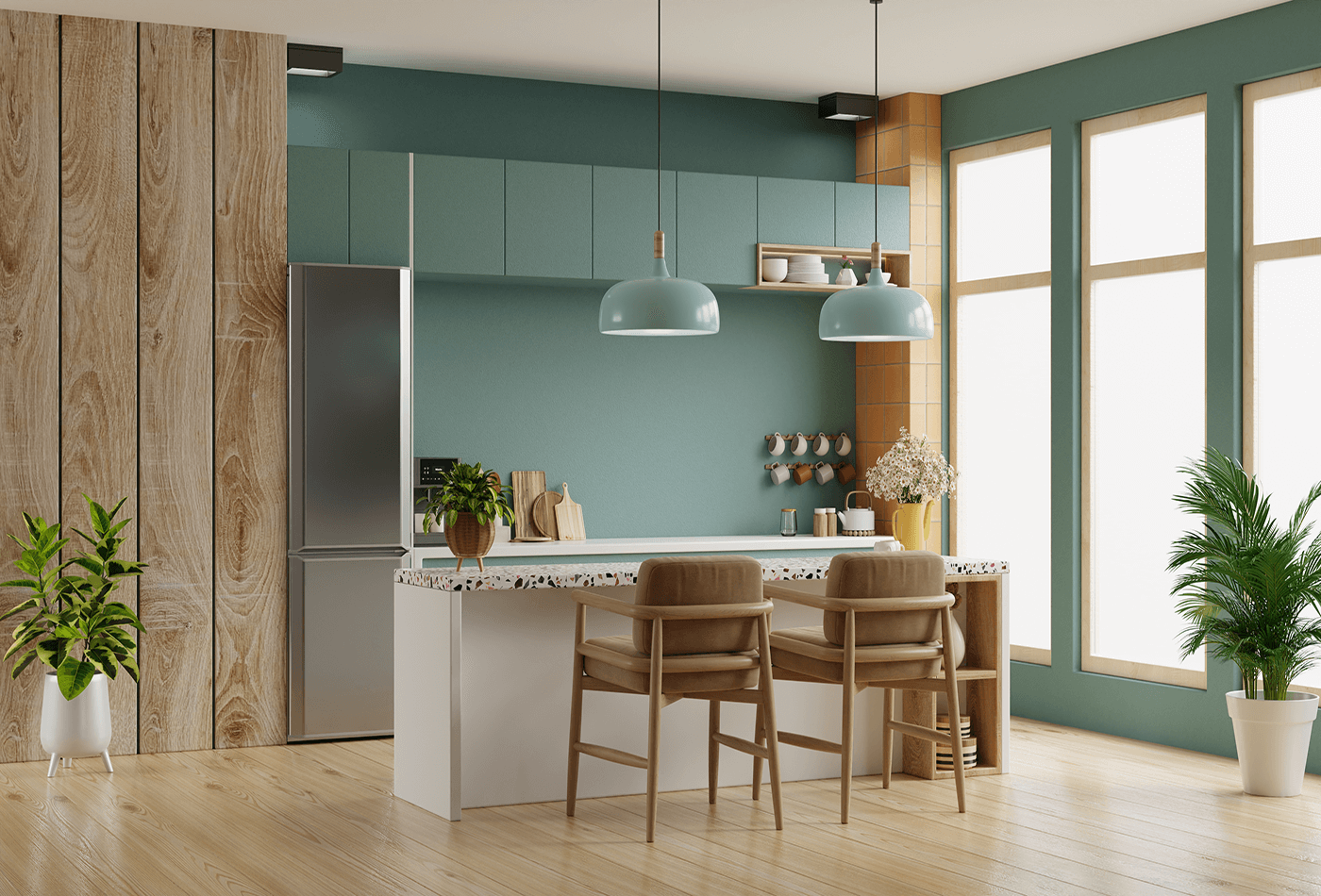Table Of Contents
- A Journey Through Time: Stones And Their Enduring Significance
- Stone Countertops: The Epitome Of Utility And Elegance
- Application Of Stones In Brief:
- Do You Know Popular Stones Used for Construction?
- Let's Give A Brief Description Of These Construction Stones:
- Popular Uses Of Stone Since Ancient Days:
- Do You Love Natural Stones?
In the annals of human history, stones have played an indispensable role, evolving from primal tools and weapons to exquisite works of art and luxurious household features. Their timeless appeal and versatility continue to captivate us, especially in the form of stone countertops, which have become a hallmark of modern interior design. The stone application goes beyond imagination, and in 2025, we hope stones will play an important role in every construction, aesthetic and organised accessory part.
A Journey Through Time: Stones And Their Enduring Significance
Since the dawn of civilisation, stones have served as essential building blocks, literally and figuratively. The Stone Age marked our first steps into the world of tools and weapons, with flint and obsidian paving the way for human innovation. Ancient civilisations recognised the enduring beauty and strength of stones, using them to craft iconic structures that have withstood the test of time.
From the majestic Pyramids of Egypt to the ethereal Parthenon in Greece, the legacy of these stone monuments continues to inspire awe and admiration. Sculptors, too, have harnessed the malleability of stone to breathe life into art, creating intricate statues and sculptures that adorn galleries and city squares worldwide.
As we fast forward to the present, the utility of stone has diversified, but it's timelessness remains unwavering. In the contemporary world, stone countertops have emerged as a testament to both form and function. From Granite to Marble to quartz, these countertops grace kitchens and bathrooms with a touch of elegance that endures the ever-changing design trends.
Stone Countertops: The Epitome Of Utility And Elegance
Stone countertops offer many practical benefits that have earned them a cherished place in modern homes. Their utility extends far beyond mere aesthetics:
Application Of Stones In Brief:
-
Stones serve as key building materials and are used to prepare the bases of various projects. For basic building projects, including foundations, flooring, slab work, partitions, beams, and bridges, stones are required.
-
Most slabs and stones used to construct the subsurface buildings and walkways come from volcanic and sedimentary rocks.
-
The face slabs' material is also used to create foundation slabs and stones for window ledges, mouldings, and entrance gateways.
-
Various types of monuments use stone applications for their aesthetic and decorative attractiveness.
-
Stone frames, moisture-resistant divisions, and even ceiling panels can all be made of stone slabs.
-
Concrete uses pulverised stones as its primary inactive component.
-
Engineered stones and construction blocks are made from crushed stones.
-
They generally serve as an ingredient in cement and lime concretes and a foundation bed for railway tracks.
-
Flameproof constructions are made of stones, and objects that can withstand heat and chemicals are typically unweathered rocks.
-
In situations where sand is unavailable, stone dust might be used instead.
-
Architectural facades are often constructed from stone application with an appealing look, such as shiny Granite and Marble.
-
Streets, pathways, and outdoor areas around residences are all paved with stones.
-
Inserts and supports for bridges, river dams, and retaining blocks are all built with stones.
-
Road foundations are constructed using pulverised stone and gravel. They combine with tar to create a final film.
Do You Know Popular Stones Used For Construction?
Several different kinds of stone applications make excellent raw materials for construction projects. Among the top ones are:
-
Granite
-
Marble
-
Limestone
-
Slate
-
Sandstone
Select Your Favourite Stone Used in Construction
Let's Give A Brief Description Of These Construction Stones:
Granite: The Durable One
Due to Granite's strength and ability to withstand wear and tear, Granite is a notably valuable stone. It can, therefore, be used in many different ways, such as counters and pathways. To enhance aesthetic value, all these may also be treated to a glossy finish. Despite being more challenging to operate with compared to other stones, it is the best stone for durability and bases.
Marble: The Exquisite Beauty

Because Marble is very fragile and easily scratched, it is less resilient than Granite. It is unique because it comes in a wide range of hues, making it handy if your main priority is aesthetics. It is a common material for sculptures and other stone applications since it is malleable and simple to work with.
Sandstone; The Rugged Rock

Although sandstone develops in varying layers and strata, which causes it sometimes to be unstable, it is readily capable of withstanding wear. It cannot be polished due to its rugged nature, but it may be used to make intriguing artwork for your property. If you desire anti-slip floors, sandstone is a good choice.
Quartzite: A Natural Mimic

Quartzite is a hard, non-foliated metamorphic sandstone. When a sandstone rich in quartz comes under heat, pressure and chemical activity under the earth's crust, it transforms into an ultra-strong quartzite. Spiritually, quartzite is associated with stability and other positive changes in a human's life. It is believed that it helps to prevent us from going back to our old state after we experience an elevating change in our lives, like an uplifting therapy or spiritual enlightenment. Quartzites have veining patterns similar to Marble and are growing popular amongst homeowners for their beautiful appearance and stone application in interior and exterior projects.
Limestone: The Historical Builder

While weaker than Granite, limestone is more durable as compared to Marble. Because of this, it is not only strong but also simple to use. It has, therefore, been among the most widely used building materials for many years. Additionally, it has a lovely, natural colour that makes it perfect for interior design. Cement manufacturing also frequently incorporates limestone during the process.
Slate: The Super-Slim Sheet

Slate has an extremely fine texture, making it possible to cut it into thinner slabs and overlay them on top of one another. Remember that if you cut it into too thin layers, it may become fragile. Additionally, it is extremely impermeable, making it perfect for rooftops, bathtubs, and electroplating circuit boards.
Travertine; From The Hostprings

Travertine can be available in a wide variety of finishes, in tan, white and cream tones and thickness range of 6mm, 12mm, 15mm and 20mm. It is a kind of earthly limestone that is formed by the deposition of calcite minerals around hot springs. The water movement from the springs disintegrates the travertine, creating voids in the stone's structure. The structure can be compared to that of a honeycomb, where small pockets or cavities exist within the stone; these are displayed as holes in the surface when it's cut into tiles. These holes can be left open or filled by the factory during tile manufacturing with a cement-based filler. Travertine stone application includes many indoor as well as outdoor purposes like for building walkways, wall coverings, patios, fountains, etc.
Popular Uses Of Stone Since Ancient Days:
As briefly discussed earlier, there have always been a variety of uses for natural stones. They have historically been used for roofing, construction, interior carpeting, decorative stone carving, and other applications. A characteristic of contemporary design developed from ancient masonry is using stones in coating applications for stone structural walls and surfaces. But the subject we'll be looking at next shows the natural stone application in countless other ways in our everyday lifestyle.
Aesthetic Uses Of Natural Stone

Natural stone is renowned for its visual beauty because of the unique variations of its colour, appearance, feel, and pattern that are seen in nature. Almost infinite configurations are possible, which opens the door to their use in artistic creations prevalent in our regular lifestyle.
Stone Tools And Equipment
Some millions of years ago, the skill of making tools out of natural stone first appeared. Human ancestors manufactured cutting stone blades, wedges, axes, and many other significant carving implements out of stone. The development of stone tools paralleled the evolution of humanity. The mediaeval Stone Age saw the creation of tools, including handle-equipped weapons to pierce skins and chisels for acquiring raw materials like flesh, hardwood, and other things. As the years went by, people developed techniques with materials like tusks, horns, and animal bones, but they continued exploiting stone to build things. Natural stone application is now done with a higher level of workmanship.
Stone Carvings And Artworks
Among the most important assets that have given contemporary man ancient information are monuments and antiques made of natural stones. Even the most cutting-edge technology innovations have been unable to match the faintest hint of beauty captured by these works of art. However, the human-made stone creations that continue to be produced today are stunning.
Water Fountains

A real stone fountain is the best way to accentuate the charm of a patio or lawn. Those are the most effective components for enhancing the landscape's attractiveness and incorporating a component that helps to relieve distress. These can be installed both inside and outside, based on the style. Select the proper form, size, and aesthetic to complement your house and yard best. To enhance the favourable traits of the fountain, one may even select paving stones and gravel.
Stone Accessories And Jewels
You will become obsessed with natural stone application in accessories after trying it on! Crafting basic jewellery is a wonderful and appealing solution, even though designing elaborate jewellery is a difficult stone craftsmanship procedure. A unique art technique that evokes a retro atmosphere is wire twisting. The craft of wire winding involves utilising a wire to create a stone ornament. Usually used stones are flat types. Oversized stones, though, may also be a good option. Jewellery with a stone embedded in it, as the term implies. This could be done with metallic, wooden, silicone dough, or plastic. Jewellery made from this style includes pendants, wristbands, brooches, and much more.
Do You Love Natural Stones?

Work-tops have a wide range of natural stones that can be used for your home renovation projects. If you love Marble, Granite and other stones, you can leave us your message by entering the correct details on this "Contact Us" page, or email us at info@work-tops.com or call 0330 113 5868 to talk to us directly. We will get in touch with you immediately.
Send your inquiry for the Stone/Worktop here and get a free quote.
P.s. The readers are informed that none of the content available on any of the pages of Work-tops.com should be taken as legal advice and that Work-tops will not be held accountable for your use of the information contained in or linked from these web pages.






